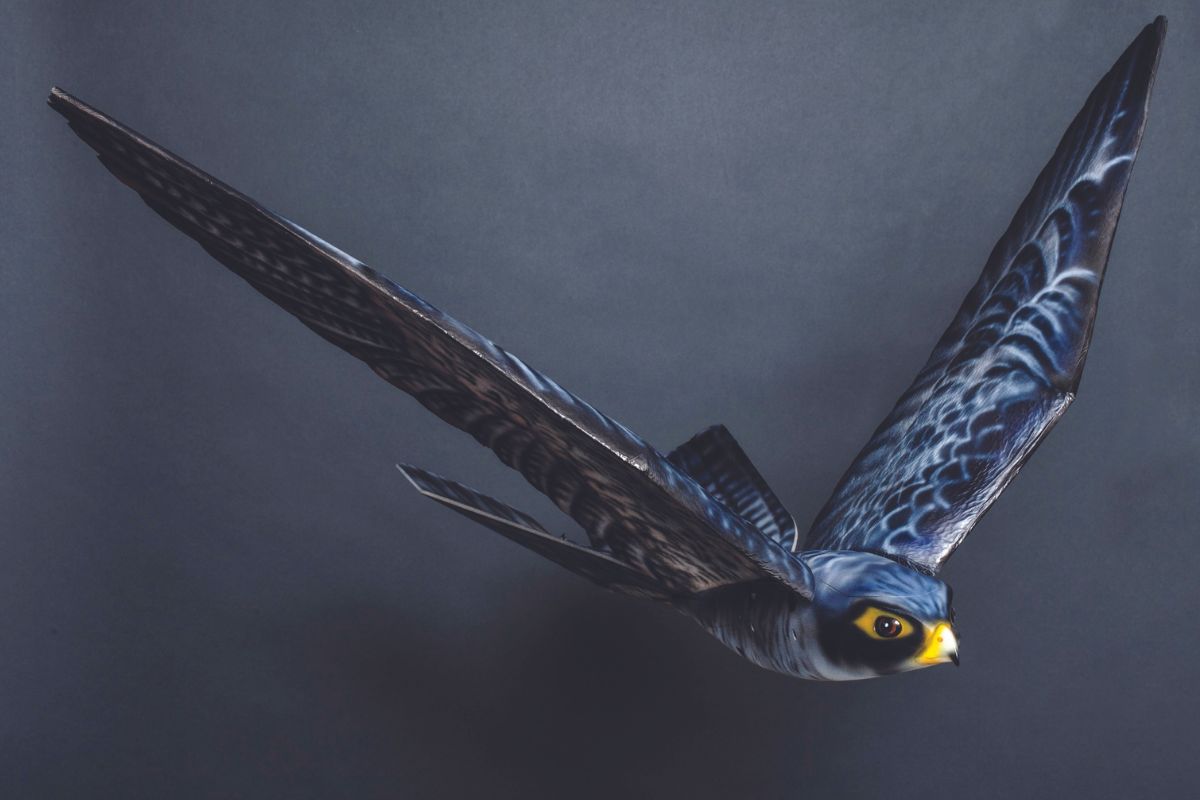AI-powered drone protects birds
Bev Betkowski - 16 December 2022

The AI-powered Robird drone's predatory bird design is aimed to help deter birds from industrial sites. Photo credit: Aerium Analytics
Birds and industrial sites: they don’t mix well. Now a new research project involving computing scientists and Aerium Analytics, a drone technology company, aims to make the second safer for the first.
Working with Imperial Oil Ltd., several graduate students in the Department of Computing Science’s Multimedia Research Centre will develop AI tools to better detect and deter birds from touching down and nesting in industrial areas like tailings ponds. The project runs until 2024 under lead researcher Irene Cheng, ’96 BSc(Special), ’99 MSc, ’05 PhD, the scientific director of the centre.
The software developed by Aerium Analytics and supported by Cheng and her team will help Aerium’s patented drone, the RoBird, automatically identify, count, track and report birds coming into an area. Aerium is already using the RoBird to help industry clients with bird deterrence.
“Our RoBird and AI provide more data and details to help resource companies increase their effective management of at-risk bird populations,” says Jordan Cicoria, president of Aerium Analytics. “It also effectively reduces the need for human operation and intervention, which in turn cuts down safety risk, on-site vehicle use and carbon emissions.”
The $1-million project was awarded in January 2022 by the Clean Resource Innovation Network (CRIN) Digital Oil and Gas Technology Competition. The competition fosters technology solutions for Canada’s oil and gas industry to improve environmental protection and operational and business competitiveness.
Cicoria is optimistic the CRIN project will create five or six new internships or company jobs within the next two years. He’s also hopeful his company’s overall growth will create 50 to 100 jobs over the next five years, strengthened by this kind of high-tech research.
By working with real-world datasets provided by companies like Aerium Analytics, the students working on the project get in-demand skills, says Cheng. “The CRIN project is a great example of building a bridge between academia and industry.”